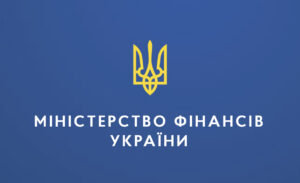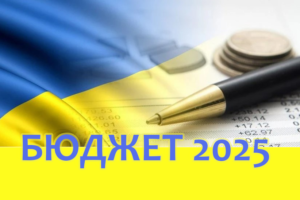
Cash expenditures of Ukraine’s general fund state budget in October 2025 amounted to UAH 312.6 billion, which is UAH 33.6 billion, or 10.7%, more than in October 2024, according to the Ministry of Finance.
According to the Ministry of Finance, in January-October 2025, general fund expenditures reached UAH 3.16 trillion, exceeding the figure for the same period last year by UAH 507.2 billion, or 19.1%.
“General fund expenditures of the state budget for security and defense in January-October 2025 amounted to UAH 2 trillion, or 63.3% of all general fund expenditures. In particular, UAH 220.6 billion was spent in October,” the report said.
A month earlier, UAH 210.8 billion was allocated to security and defense, with total general fund expenditures of UAH 312.6 billion, indicating continued growth in monthly defense payments.
At the same time, for the sixth time in a row, the Ministry of Finance does not disclose more detailed items of military expenditures in its operational report – data on payments of monetary support to military personnel, purchases of military equipment, weapons, ammunition, and defense products, as well as separate transfers to the National Health Service of Ukraine (NHSU), the Pension Fund, and the Entrepreneurship Development Fund.
At the same time, according to Finance Minister Serhiy Marchenko, speaking in the Verkhovna Rada on September 19, the monthly level of monetary support for the military in 2025 will increase significantly. “January – UAH 78.8 billion, February – UAH 86 billion, March – UAH 86 billion, April – UAH 91 billion, May – UAH 97 billion, and August also UAH 98 billion,” the minister said.
In October 2024, the Ministry of Finance reported the payment of UAH 86 billion in monetary support, which allows us to assess the scale of growth in military payments against the backdrop of the ongoing full-scale war.

Prices for RAM in Europe and the US have risen significantly, negatively affecting the electronics and computer market. In Ukraine and neighboring countries, this trend is already beginning to take effect, although there is little accurate domestic data available yet.
According to Reuters, Samsung Electronics raised its contract prices for 64 GB and 96 GB DDR5 modules by more than 30% between September and November 2025.
Analysts at Counterpoint Technology Market Research note that global prices for some DRAM chips have risen 3-11 times since the beginning of 2025.
The GameGPU portal reports that in Europe, a 64 GB DDR5 kit sells for around €550, which is significantly higher than the usual level.
TrendForce predicts that memory prices could rise another 30% in the fourth quarter of 2025 and another 20% in early 2026.
There are no accurate statistics for Ukraine at the time of publication, but retailers and dealers note that prices for 64 GB DDR5 kits have risen by tens of percent in recent months.
The increase in memory costs leads to higher prices for computers, laptops, game consoles, and servers. There is already information that manufacturers and sellers in the EU are preparing significant price adjustments for models with high memory capacities.

The largest share of cash expenditures from Ukraine’s general fund budget for January-October 2025 was spent on wages and benefits, amounting to UAH 1.26 trillion, according to the Ministry of Finance.
According to the Ministry of Finance, in October, UAH 133.1 billion was allocated to wages and accruals, which is 39.9% of the total expenditures of the general fund for the month. Compared to the same period in 2024, labor costs increased by UAH 220.7 billion, or 21.2%, over ten months, including UAH 19.9 billion, or 17.6%, in October.
Expenditures on goods and services for January-October 2025 amounted to UAH 458 billion, including UAH 60.7 billion in October, or 14.5% of the total. In the first ten months of 2024, these expenditures amounted to UAH 416.9 billion, including UAH 53 billion in October, which indicates a significant increase in purchases of goods and services for the budget sector.
In January-October, UAH 524.4 billion, or 16.6% of all general fund expenditures, was allocated to social security—the payment of pensions, benefits, and scholarships. This is UAH 58.4 billion, or 12.5% more than in the same period last year. At the same time, in October 2025, social expenditures were lower than a year earlier—UAH 49.4 billion versus UAH 54.2 billion.
Expenditures on subsidies and current transfers to enterprises, institutions, and organizations for ten months amounted to UAH 384.4 billion, or 12.1% of the total, including UAH 37.3 billion in October. Compared to January-October 2024, these expenditures increased by UAH 117.9 billion, or 44.2%, reflecting the expansion of support for certain sectors of the economy and critical infrastructure.
Servicing the national debt cost the general fund of the state budget UAH 279.9 billion, or 8.8% of all expenditures, in the first ten months of 2025. In October, UAH 33.6 billion was allocated for these purposes. This is UAH 36.3 billion more than in the same period last year, which is due to both an increase in the volume of debt and a change in borrowing conditions.
Finally, UAH 156.3 billion, or 4.9% of general fund expenditures for January-October, was used for transfers to local budgets, including UAH 16.9 billion in October. Compared to the first ten months of 2024, these expenditures increased by UAH 9.3 billion, or 6.3%.

The 5th Ukrainian Construction Congress and the first All-Ukrainian Yellow 2025 Product Design Award took place on November 21 at the Parkovy Exhibition Center in Kyiv, bringing together representatives of the development market, investment funds, local government bodies, and industry experts, according to the event organizers.
According to the organizers, the Congress was attended by 3,474 participants. The event discussed issues of infrastructure restoration, the shortage of construction personnel, the rising cost of materials, and the need to update construction and project management standards. Participants presented case studies on the modernization of the industry and market development scenarios for the next two years.
Among the key events of the forum were the opening of the All-Ukrainian Yellow 2025 Product Design Award and a performance by musician Yevgen Kharchyshyn (Druga Rika), which concluded the business program.
During the panel discussion “The Evolution of the Developer: Me, You, Society,” the transformation of the role of the developer from a builder to a manager and community partner was discussed. Representatives of the analytical portal LUN.ua presented an updated overview of the real estate market, which participants described as “an essential planning tool in conditions of uncertainty.”

A new educational platform, DevelopStudy, created by MIB and Real Estate Business School, was also presented, aimed at training specialists in the development sector.
Among the main conclusions of the Congress, the organizers noted the following:
– the market is in a state of turbulence due to the rising cost of construction work, labor shortages, and investment restrictions, but there are no signs of stagnation;
– Ukraine’s recovery requires large-scale projects to modernize infrastructure, transition to modern technological solutions, and energy-efficient standards;
– the role of developers is expanding and includes resource management, improving service quality, and strengthening buyer confidence;
– The real estate market in 2026 will be focused on quality, transparency of processes, and sustainable brands.
– Communities are becoming key players in the recovery, as the quality of project preparation determines the prospects for attracting investment.
– Modernization of vocational education and raising industry standards are seen as a necessary foundation for further market development.
As part of the Yellow 2025 award, the jury selected the winners from among 126 submitted works. The award is focused on the development of product design and the formation of quality standards.
The event was organized by the DMNTR media group. The general partner was Kreator-Bud, the premium partner was Spatium Group, and the general sponsor was HutJet.
Interfax-Ukraine was the general information partner of the Congress.

Ukraine’s state budget revenues for January-October 2025 amounted to UAH 2.97 trillion, including general fund revenues of UAH 2.11 trillion, which is 26.4% and 26.1% higher than in the same period of 2024, according to the Ministry of Finance.
At the end of 2024, general fund revenues increased by UAH 513.9 billion, or 30.9%, to UAH 2 trillion 177 billion, while general fund expenditures increased by UAH 454.5 billion, or 15%, to UAH 3 trillion 488.8 billion, according to data from the Ministry of Finance.
Initially, the 2025 state budget was approved with revenues of UAH 2 trillion 327.1 billion, including general fund revenues of UAH 2 trillion 133.3 billion (excluding grants and international aid), and expenditures of UAH 3 trillion 929.1 billion, of which UAH 3 trillion 591.6 billion was allocated to the general fund.
At the end of July, the Verkhovna Rada, at the government’s suggestion, increased the 2025 state budget expenditures by UAH 400.5 billion and revenues by UAH 147.5 billion. In October, parliament approved an additional increase in expenditures of UAH 324.7 billion for the national security and defense sector, while increasing revenues by UAH 20 billion.
Taking into account the changes made, the revenues of the 2025 state budget (excluding grants) are now planned to amount to UAH 2 trillion 482.6 billion, while expenditures are planned to amount to UAH 4 trillion 337.5 billion. The general fund is expected to have revenues of UAH 2 trillion 278.7 billion and expenditures of UAH 3 trillion 990.1 billion.
Thus, the formally projected deficit of the 2025 state budget, excluding grants and international aid, is about UAH 1.85 trillion, and the deficit of the general fund is about UAH 1.71 trillion, a significant part of which, according to the Ministry of Finance, is directed to financing the security and defense sector.

The Experts Club analytical center analyzed Albania’s economy for the first 10 months of 2025 and presented its analysis and forecast. Based on the results of the first ten months of 2025, Albania continues to have one of the highest growth rates in Europe, with low inflation, stable currency reserves, and continued growth in tourism, but it faces a slowdown in industrial output and an expanding trade deficit.
According to IMF mission estimates and national statistics, Albania’s real GDP grew by approximately 3.4–3.6% year-on-year in the first half of 2025, which is comparable to 2024 figures and above the European average. The main drivers of growth remain the service sector, construction, and tourism: foreign tourists alone spent around €2.1 billion in the country in the first six months, which is 7–8% more than a year earlier.
International institutions expect the economy to grow by around 3.4-3.7% by the end of the year: after its autumn mission, the IMF raised its forecast to 3.5% for 2025, while the World Bank and the EBRD also expect growth of over 3%.
Inflation in the country remains low and close to the target level. According to the IMF and national statistics, annual consumer price inflation in 2025 is around 2–2.3%.
The labor market situation is improving moderately. The unemployment rate in the second quarter of 2025 fell to 8.5%, which is significantly below the historical average (around 14%).
Industry remains the most vulnerable sector. According to estimates by research centers and statistics, industrial production in Albania in the first quarter of 2025 declined by approximately 2.1% compared to the same period in 2024, while in the second quarter the decline slowed to around 0.5%. Manufacturing output in June 2025 was 0.9% lower than a year ago. This reflects the problems of traditional export industries, primarily textiles and clothing, which are under pressure due to the strengthening of the national currency and demographic outflow.
The external sector remains a weak spot in the macroeconomy. According to Albanian think tanks and INSTAT, the trade deficit in goods widened to about 25.3% of GDP in the first half of 2025, despite high tourism revenues. Remittances from migrants grew by about 5% to €1.2 billion, remaining an important source of external revenue, while foreign direct investment stabilized at around €1.1 billion over the same period.
At the same time, external stability appears comfortable. According to Trading Economics, Albania’s international reserves reached $7.3 billion in September 2025. In its final Article IV statement, the IMF explicitly notes “strong reserves, declining public debt, and one of the highest growth rates in Europe” as a basis for further reforms and deeper integration with the EU.